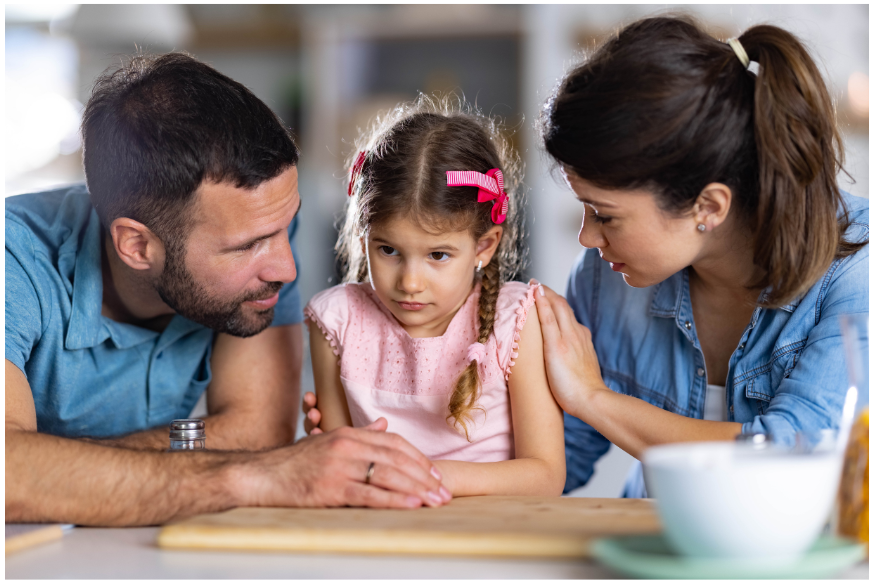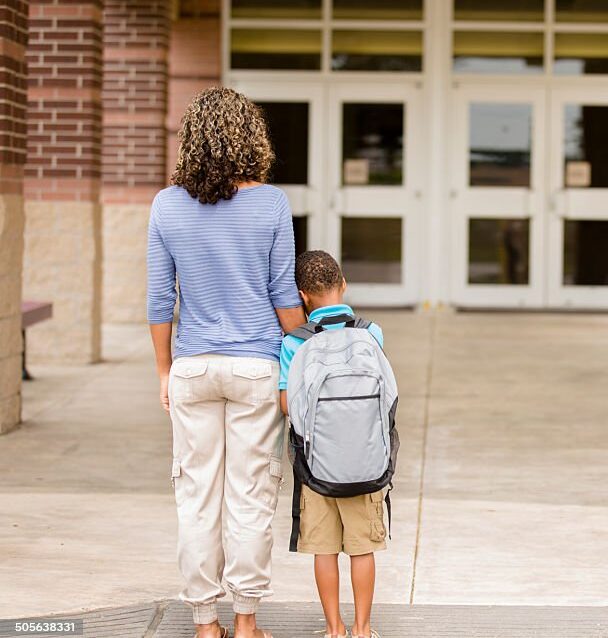Creating Family Resilience
If you’ve ever had a family session with me, you’re surely no stranger to the idea of “uncooked spaghetti vs cooked spaghetti”. I use this analogy often to explain to families the idea of noticing how you usually show up in the world. Uncooked spaghetti snaps and breaks when it is bent or twisted. Often ending up in small pieces all over the floor. We want to instead strive towards showing up like cooked spaghetti as often as possible, even if it may sometimes take practice or is at times painful. The more you practice this, you inherently become flexible, adaptable, or dare I say even resilient.
Resilience is “the capacity to withstand or recover quickly from difficulties, or toughness.” This doesn’t mean we don’t have feelings about the difficulties or even express them. Rather, it means we can feel and experience disappointment or challenges and then be able to move forward.
Not only do we as adults and parents have the ability to strengthen our own resilience, we can also influence and support our kids of any age in fine tuning theirs. Knowing the many areas where resilience can be built is the first step. Dr. Kenneth Ginsberg, a pediatrician first developed the 7 Cs of resilience as a framework for key areas we can encourage and help ourselves and our children.
7 C of Resilience:
- Competence: Being able to handle various situations as a result of experience and learning.
- Confidence: Believing in your own ability to handle life’s challenges, and being open to trying new things and taking risks.
- Connection: Experiencing a sense of belonging and feeling support from family, friends, community, or mentors.
- Character: Developing a strong sense of identity, values and morals such as honesty, integrity, respect and responsibility.
- Contribution:Taking part in giving back to others or society, by volunteering, serving others or being kind and generous
- Coping: Knowing what tools to use to manage stress and being able to implement them.
- Control:Believing you have power over your own life and are able to make choices to manage outcomes, rather than being helpless or passive.
Now let’s discuss what we can do each day to develop these areas. Remember, developing and strengthening these traits in ourselves first is the most effective way to ensure our children do the same. They model what we do, NOT what we say. No child of any age will buy into these traits if you yourself are not demonstrating them.
Competence develops by empowering children, teens and young adults to make decisions. They don’t need to be your decisions, or even the right decisions. They just need to be theirs. Also, communicating your belief in their ability to handle things. If you step in and let parental anxiety and fear take over, they can’t receive this message.
Confidence grows from parents highlighting a child’s strengths and best qualities, like kindness, grit, or integrity. Recognizing when the child is taking on more than they can handle and supporting them in setting boundaries for themselves.
Connection builds by openly handling conflict in the home. Providing physical and emotional safety in the home, and modeling how to reach out to others during difficult times.
Character evolves by showing kids how behaviors impact others, keeping racist or hateful language out of the home, and helping kids connect to opportunities in the community.
Contribution stems from learning how to give back to others and watching you do the same. When that becomes common practice in your home, that gets internalized for kids.
Coping is learned by you as a parent talking openly and often about how you cope with difficult feelings, challenges or frustrations. Ask kids what they do to cope. Normalize tools and strategies for doing so and model them often.
Control is realized by kids when they experience discipline as learning, rather than an attempt by parents to punish or control. Also, pointing out and asking your child to identify the situations or circumstances they do have control over and ones in which they do not.
Trying to remain consistent with the specific strategies above will not only create resilience within your child, but will also serve as a much needed reminder to continue developing your own. Keep up the great, beautiful and difficult work! Don’t hesitate to reach out if we can support you in any of this.
Megan
If you’ve ever had a family session with me, you’re surely no stranger to the idea of “uncooked spaghetti vs cooked spaghetti”. I use this analogy often to explain to families the idea of noticing how you usually show up in the world. Uncooked spaghetti snaps and breaks when it is bent or twisted. Often ending up in small pieces all over the floor. We want to instead strive towards showing up like cooked spaghetti as often as possible, even if it may sometimes take practice or is at times painful. The more you practice this, you inherently become flexible, adaptable, or dare I say even resilient.
Resilience is “the capacity to withstand or recover quickly from difficulties, or toughness.” This doesn’t mean we don’t have feelings about the difficulties or even express them. Rather, it means we can feel and experience disappointment or challenges and then be able to move forward.
Not only do we as adults and parents have the ability to strengthen our own resilience, we can also influence and support our kids of any age in fine tuning theirs. Knowing the many areas where resilience can be built is the first step. Dr. Kenneth Ginsberg, a pediatrician first developed the 7 Cs of resilience as a framework for key areas we can encourage and help ourselves and our children.
7 C of Resilience:
- Competence: Being able to handle various situations as a result of experience and learning.
- Confidence: Believing in your own ability to handle life’s challenges, and being open to trying new things and taking risks.
- Connection: Experiencing a sense of belonging and feeling support from family, friends, community, or mentors.
- Character: Developing a strong sense of identity, values and morals such as honesty, integrity, respect and responsibility.
- Contribution:Taking part in giving back to others or society, by volunteering, serving others or being kind and generous
- Coping: Knowing what tools to use to manage stress and being able to implement them.
- Control:Believing you have power over your own life and are able to make choices to manage outcomes, rather than being helpless or passive.
Now let’s discuss what we can do each day to develop these areas. Remember, developing and strengthening these traits in ourselves first is the most effective way to ensure our children do the same. They model what we do, NOT what we say. No child of any age will buy into these traits if you yourself are not demonstrating them.
Competence develops by empowering children, teens and young adults to make decisions. They don’t need to be your decisions, or even the right decisions. They just need to be theirs. Also, communicating your belief in their ability to handle things. If you step in and let parental anxiety and fear take over, they can’t receive this message.
Confidence grows from parents highlighting a child’s strengths and best qualities, like kindness, grit, or integrity. Recognizing when the child is taking on more than they can handle and supporting them in setting boundaries for themselves.
Connection builds by openly handling conflict in the home. Providing physical and emotional safety in the home, and modeling how to reach out to others during difficult times.
Character evolves by showing kids how behaviors impact others, keeping racist or hateful language out of the home, and helping kids connect to opportunities in the community.
Contribution stems from learning how to give back to others and watching you do the same. When that becomes common practice in your home, that gets internalized for kids.
Coping is learned by you as a parent talking openly and often about how you cope with difficult feelings, challenges or frustrations. Ask kids what they do to cope. Normalize tools and strategies for doing so and model them often.
Control is realized by kids when they experience discipline as learning, rather than an attempt by parents to punish or control. Also, pointing out and asking your child to identify the situations or circumstances they do have control over and ones in which they do not.
Trying to remain consistent with the specific strategies above will not only create resilience within your child, but will also serve as a much needed reminder to continue developing your own. Keep up the great, beautiful and difficult work! Don’t hesitate to reach out if we can support you in any of this.
Megan
Related posts
Creating Family Resilience
If you’ve ever had a family session with me, you’re surely no stranger to the idea of “uncooke
Another Look at Parent Anxiety
I have a vivid memory, when my kids were small, of a winter day wrangling the two of them in the wai
Parent Anxiety
Taming Parent Anxiety: How to Lead with Love and Calm As a family therapist who has spent years help






Leave a Reply